
By 1921, the thriving Greenwood district of Tulsa, Oklahoma, had generated one billion dollars of collective wealth in today’s economic terms. Nicknamed “Black Wall Street” by W.E.B. DuBois, this neighborhood on the north side of the city boasted Black-owned businesses including hotels, newspapers, medical and legal offices, and churches. Then, starting on May 31 of that year, a white mob envious of this success attacked Greenwood, massacring hundreds of residents overnight. Over the course of two days, the mob razed the neighborhood, destroying homes and businesses, and left more than ten thousand people homeless. But in the years following, this event, instead of being recognized as one of the worst acts of violence in American history, was suppressed under the weight of silence and shame. Decades later, the community faced further destruction through urban renewal plans which built a highway through the neighborhood, removing even more homes, businesses, and cultural spaces.
After a century of relative silence about the event, particularly on the national level, it finally received a spotlight as one of the darkest chapters in America’s racial history last summer, when President Biden paid a visit to the Greenwood district. But the Greenwood community had already been working for years to commemorate the centennial, honor the victims and their descendants, tell the story of the tragedy, and honor the resilience of those who survived and rebuilt.
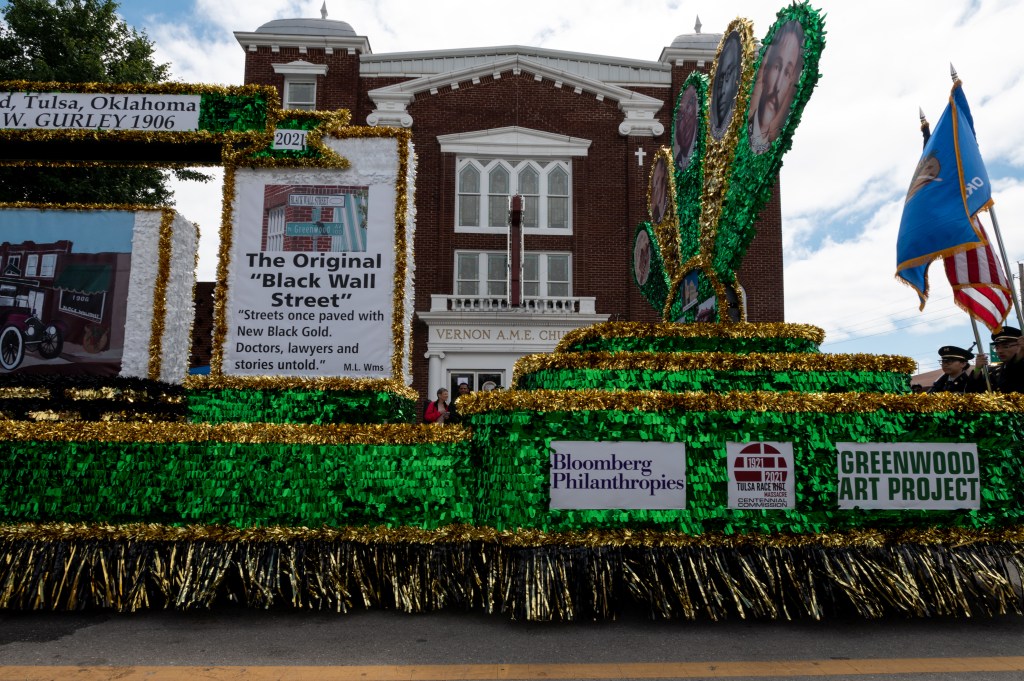
Among these local efforts was the Greenwood Art Project, a partnership between the City of Tulsa and the 1921 Tulsa Race Massacre Centennial Commission, designed to serve as the cultural component to the massacre’s centennial year. Through specially commissioned artworks, the project aimed to raise awareness of the lives and livelihoods lost in the massacre and commemorate the resilience and recovery of the community. Bloomberg Philanthropies awarded the Greenwood Art Project one million dollars in 2019 as part of its Public Art Challenge, which supports innovative public art projects that address critical issues in cities across the country.
Co-led by nationally renowned artist Rick Lowe, the founder of Project Row Houses and a MacArthur Award winner, and interdisciplinary artist William Cordova, the massive, citywide public art project included over thirty art installations from local and international artists, who created sculptures, murals, dance and theater performances, films and documentaries, and events that portrayed the past, present, and future of Greenwood. All of the artists lived in or had strong ties to Oklahoma, and several were direct descendants of Tulsa Race Massacre survivors, with projects that reflected their family histories and personal experiences with rebuilding the Greenwood community. Participating artists who were not from Tulsa drew connections to their own experiences with displacement, resilience, and rebuilding in their local communities.
Skip over related stories to continue reading articleBetween 2018 and the project’s centennial opening in May 2021, the Greenwood Art Project successfully laid a foundation of community engagement by collaborating with local residents, artists, and leaders to center the community in the project. Museums and other commemorative initiatives can adopt many of the lessons we learned to ensure their projects are an opportunity and a resource for the communities they’re seeking to lift up. While museums and exhibitions played a major role in our work in Greenwood, the greatest innovations came through the relationships we built and the local resources we incorporated, and our experience in Tulsa can offer anyone working in this space insight into how a project can respect and reflect the history and culture of a community. Here is how we did it:
We engaged every level of the community from the beginning of the project.
To capture the diversity of Greenwood, we incorporated the voices of local individuals and organizations into all of our decision-making.
To guarantee the project would reflect the diversity of Greenwood and of Tulsa, we ensured it served as a “big tent” in its initial stages. Starting several years prior to the centennial, we began hosting community meetings that required us to listen to all voices. The first was at Greenwood Cultural Center, where we announced the funding from Bloomberg Philanthropies to an audience of locals, many of them descendants of the massacre, and called for all to participate and share their voices and their stories.
Following that, we went on a year-long “listening tour” of meetings with community groups, cultural organizations, schools and universities, youth sports teams, nursing homes, churches, mental health organizations, small businesses, and large companies, all to inform the community about the project and invite them to reflect upon the centennial and discuss how their story should be told. Cultural organizations we engaged included the Philbrook Museum of Art, Tulsa Artist Fellowship, the Woody Guthrie Center, Ahha Gallery, the Greenwood Rising museum, and the Greenwood Cultural Center.
When the people we spoke with said they wanted to participate and tell their stories, we continued the conversation and invited them to join us in a shared mission. Our team stayed in contact with artists and community members through weekly calls, meetings with curators, and marketing and communications campaigns. The narratives proposed by these members of the local community became the architecture of the Greenwood Art Project.
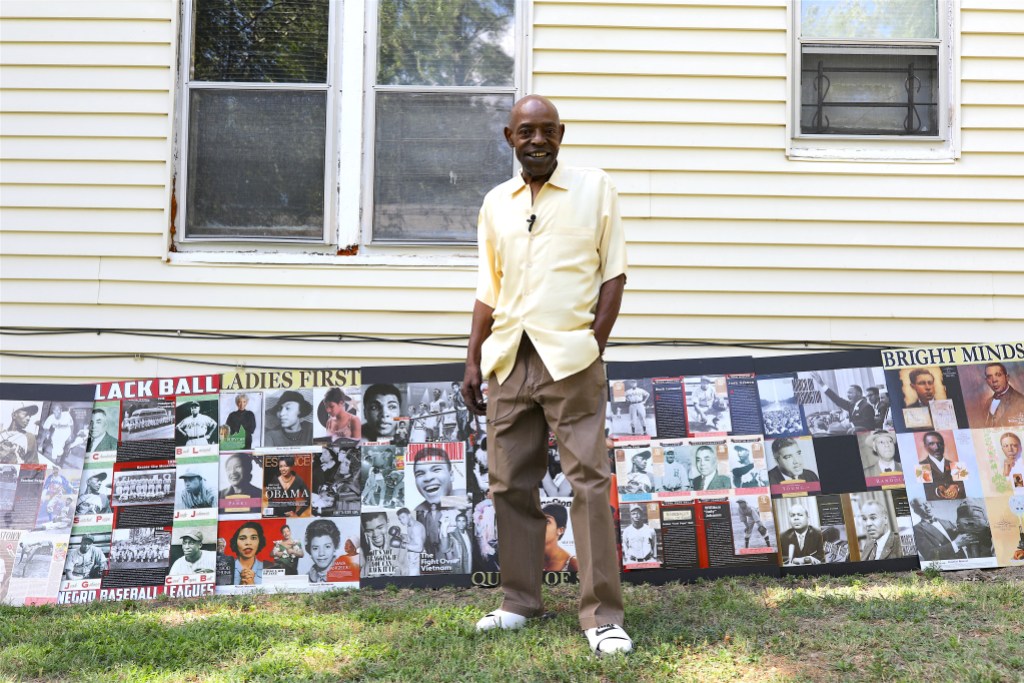
One thing we learned was that the community was interested in ensuring the artists involved in the project were local. They wanted the story to be told in the most authentic and historically accurate way possible, by people who had some direct connection to it. For example, they were interested in work like Maybelle Wallace’s, a lifelong Tulsan born just seven years after the massacre, who designed an immersive theater experience called Dark Town Strutter’s Ball that helped audiences imagine the heyday of Black Wall Street and the joy of Greenwood’s prosperous residents.
The final artworks reflect the deep bonds between artist, community, and history that emerged from the project’s “big tent” philosophy. As one example, D’Marria Monday, founder of the Block Builderz community project, said this upon encountering The American Dream, a site-specific work by Sarah Ahmad exploring the destruction and renewal she experienced growing up in Northern Pakistan:
“I left feeling inspired by the fire of my ancestors’ blood pumping through my body. It was in this moment that I walked out with a renewed hope of resilience as I ventured along a new path. A hope that we can rebuild from the flames. Our ancestors experienced loss and devastation; just like the Phoenix, they rose from the flames. Our ancestor’s spirit of resiliency lies within… I am thankful to the Greenwood Art Project for creating this experience in tribute to our ancestors. We’re able to look back and be inspired to move forward!”
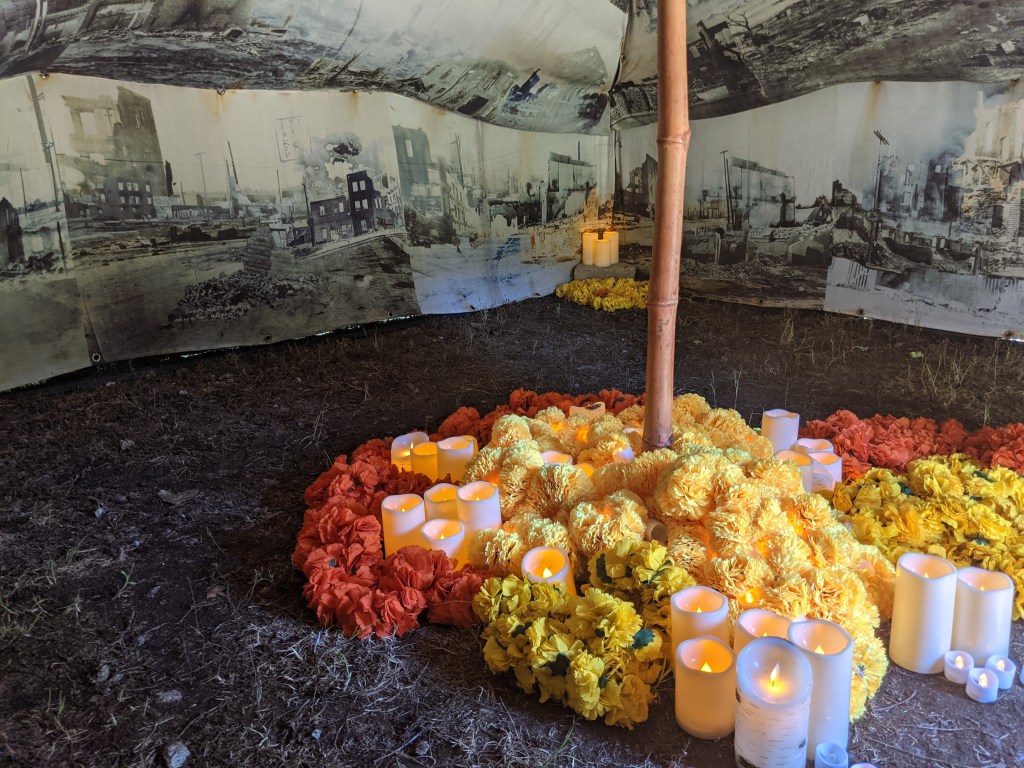
We made sure we understood the community’s needs and adapted to major challenges presented by the pandemic.
We tapped into our local, mission-driven tech entrepreneurs to keep lines of communication open and support a transition to online engagement.
Our deep community engagement process helped us establish a strong network, but when the pandemic arrived, we faced hurdles in maintaining communication with this network. Lack of Wi-Fi access among many members of the city’s older generations presented a particularly serious challenge, as we valued the input of these older Tulsans, many of whom directly contributed to rebuilding the Greenwood District and sharing the stories of the massacre with following generations.
We supported residents in overcoming these barriers by hosting technical training sessions which provided access to computers and technology. We partnered with local tech organizations like Urban Coders Guild to walk community members through our online application process, teaching them how to do things like set up an email account and upload documents to our online application site. We held additional workshops (which moved online during the pandemic) for residents to broadcast their ideas and collaborate with their neighbors. These workshops became springboards for a host of other skill-building exercises in areas like communications, writing, and visual arts. The community asked for an investment in their future, and we provided them with educational and technical support that they could use in future projects and careers.
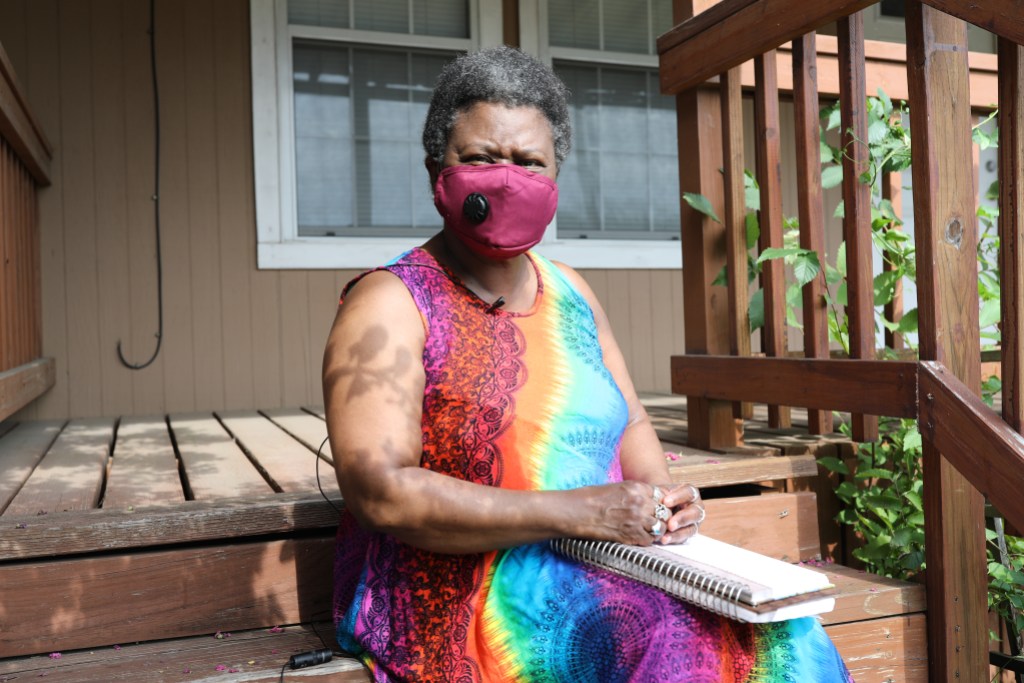
We partnered with trusted local leaders.
Our partners ranged from neighborhood ambassadors to the mayor’s office, who brought a Tulsan perspective that only they could provide.
The success of this project hinged on working with community members and identifying trusted local partners who could help us represent Greenwood and bring the project to fruition.
Inspired by advice we heard from previous Public Art Challenge participants at Bloomberg Philanthropies headquarters in New York City, the Greenwood Art Project team employed an ambassador program, inviting residents throughout Tulsa to represent their respective neighborhoods to the project and represent the project to their communities. The selected ambassadors had deep ties with the schools, universities, museums, and galleries who became collaborators, and they spread the word and brought audiences to experience the project. The ambassadors were proud of the Greenwood Art Project and of Tulsa, adding a sense of passion that only someone who cherishes their hometown can provide. They were onsite at all projects and events, providing information, swag gifts, and messaging.
One ambassador, Florence Smith, spoke of the rewarding experience of giving back to her community. “As an ambassador I got to see firsthand just how deeply the community is hurting and healing through poetry, the art, music, and performances,” she said. “The Greenwood Art Project gave the community a voice, a free voice to express how they feel with no sugarcoating… It was a priceless movement that provoked every emotion, that left me angry and uncomfortable, as well as feeling inspired, enchanted, and resilient.”
Beyond the ambassador’s program, we built a powerful relationship with local officials and the City of Tulsa. This relationship began with a personal letter from Bloomberg Philanthropies CEO Patti Harris to Tulsa Mayor G.T. Bynum. The Public Art Challenge requires mayoral involvement in the project, which led the city to develop a unique, close working relationship with nonprofits and artists. This relationship evolved into a close collaboration between the city, community members, and artists.
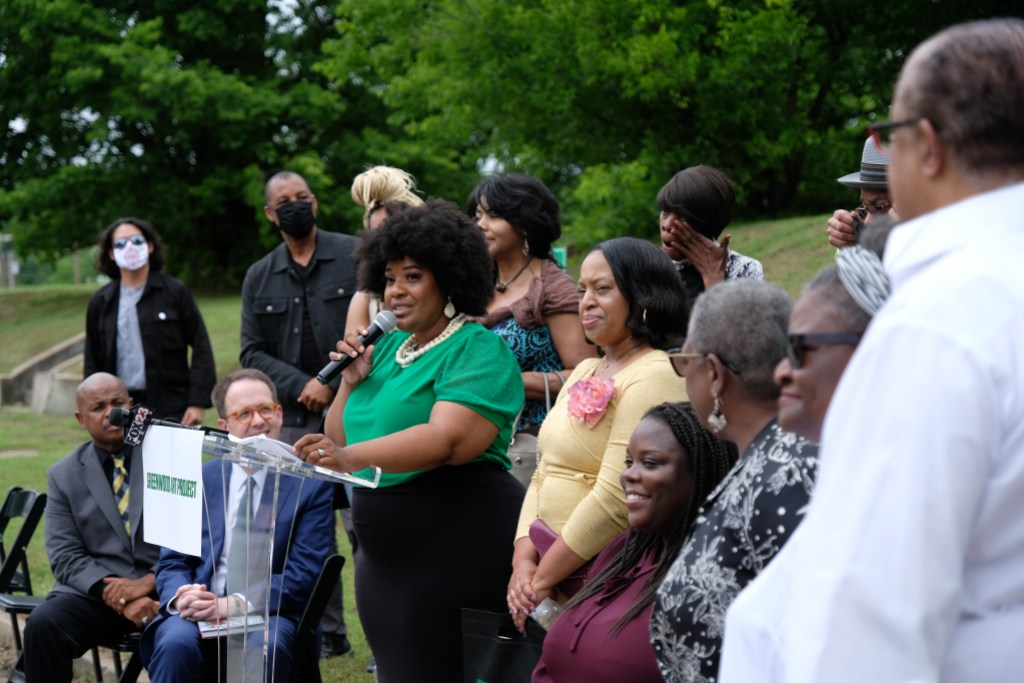
The city helped provide access to spaces throughout Tulsa, marketing of the project on billboards and light posts, and press resources. Planning permissions, and other practicalities of execution such a sweeping project, also relied on this cooperative relationship. City officials were involved in communications, media relations, and harnessing the powerful stories of Greenwood Art Project to support the city’s roadmap toward a more racially equitable future. One legacy of the project is the Pathway to Hope, a transformation of the destructive I-22 highway led by the city and state and designed by Rick Lowe and William Cordova, who curated photographs of local artist Don Thompson alongside the highway. At the project opening, Mayor Bynum surprised Rick Lowe with a key to the City of Tulsa to demonstrate his appreciation for the prominence the project had given to the city.
We used digital tools to build engagement and momentum.
We expanded the project’s reach with digital resources that brought it to a wide virtual audience, securing its legacy by allowing audiences of the future to experience the project.
The Greenwood Art Project is now accessible to a national audience through a dedicated digital guide on the Bloomberg Connects app. Through this interactive mobile app, anyone anywhere in the world can continue to interact with the project and learn about the legacy of the Tulsa Race Massacre. Establishing a permanent online exhibit allows the reflections on the centennial and the shared vision for Tulsa’s future to live on in perpetuity, and for the work of the city’s community in commemorating their shared history to continue to be recognized and celebrated. While the idea for Bloomberg Connects precedes COVID-19, it nonetheless became a vital bridge for staging the project during the pandemic, providing a touchless experience for in-person visitors and facilitating virtual visits for those socially distancing at home.
Bloomberg Philanthropies is also partnering with the Greenwood Rising museum, a legacy project that provides a permanent interactive exhibit of Black Wall Street and the massacre in the heart of Greenwood. Visitors connect to the spirit of the neighborhood’s historic residents through projection mapping, holographic effects, and environmental media, ensuring that conversations on racial reconciliation and restorative justice remain alive long past the centennial.
Reckoning with a chapter of American history as painful as the Tulsa Race Massacre required delicate, thoughtful bridge-building within the Greenwood community that was led by local residents. By incorporating all voices, and ensuring the Tulsa community was driving the direction of the project at all levels, the Greenwood Art Project became a forum to both reflect and build toward a new future of racial equity in the city.
The centennial of the Tulsa Race Massacre was a once-in-a-generation opportunity for the city to use a tragedy in its past to make a long-term investment heading into its future. Bloomberg Philanthropies and the Greenwood Art Project were proud to celebrate the remarkable city of Tulsa, and we eagerly await to see what the future holds for those who were instrumental in the project’s success.
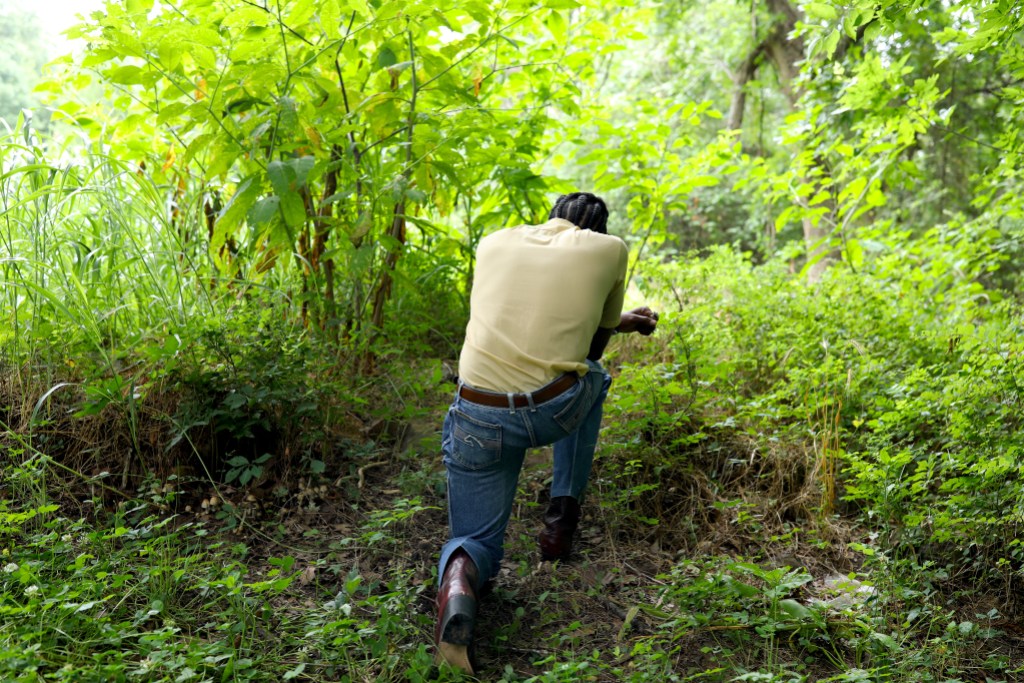








Comments